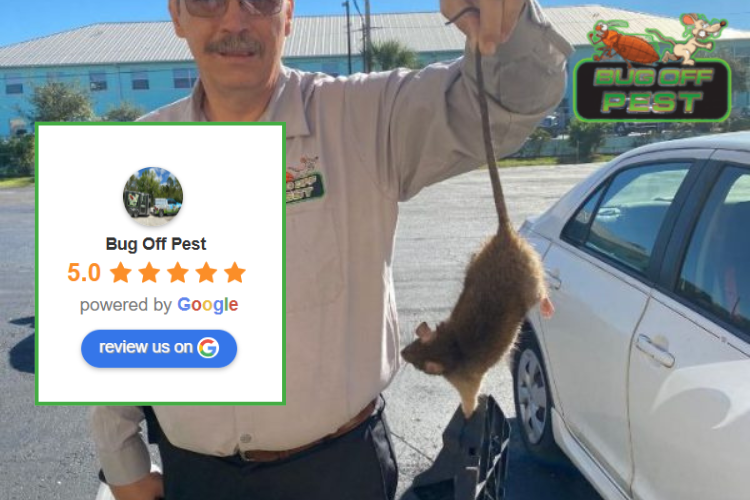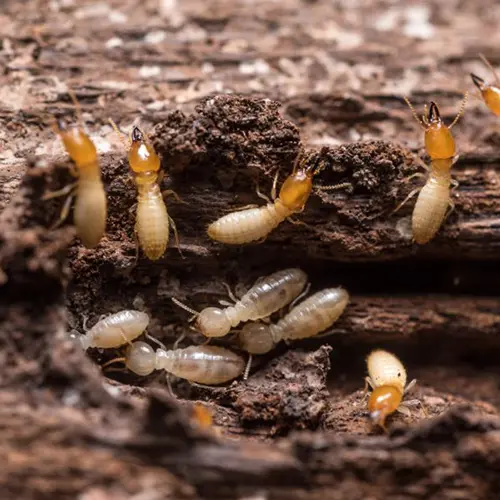Experienced Cockroach Exterminator Port Charlotte to Eliminate Pests Fast
Discover the most recent Advances in Parasite Control and Exactly How to Apply Efficient Therapy Solutions
In current years, the field of bug control has seen considerable innovations, driven by the requirement for lasting and effective therapy solutions. Cutting-edge techniques such as Integrated Bug Monitoring (IPM) integrate eco-friendly practices with sophisticated technology, boosting both effectiveness and environmental obligation.
Eco-Friendly Bug Control Options
Recently, the demand for green pest control choices has actually risen as businesses and property owners alike seek sustainable options to traditional chemical therapies. This shift is driven by growing environmental awareness and a wish to minimize the health risks associated with synthetic pesticides.

Environment-friendly insect control methods incorporate a variety of methods that focus on making use of natural substances and techniques. Integrated Insect Management (IPM) is one such method, integrating organic, social, and mechanical tactics to take care of bug populaces while minimizing dependence on chemicals (Wildlife removal services). This holistic approach highlights prevention via habitat manipulation and the intro of natural killers, thus fostering a well balanced community
An additional prominent alternative is making use of agricultural chemicals originated from plants, which have a tendency to be less dangerous to non-target organisms. Products like neem oil and diatomaceous planet have gotten traction for their efficiency in regulating parasites while positioning marginal risks to human wellness and the environment.
Furthermore, exemption techniques, such as securing access points and preserving cleanliness, play a vital function in environment-friendly pest administration. By embracing these lasting techniques, companies and people can successfully manage insects while promoting a much healthier earth for future generations.
Smart Technology in Insect Administration
Technology is improving the landscape of parasite monitoring, with smart innovation arising as a pivotal force in enhancing effectiveness and performance - Wildlife removal services. The integration of Internet of Things (IoT) devices, synthetic intelligence (AI), and data analytics is transforming exactly how bug control specialists come close to invasions
Smart catches geared up with sensors can find parasite task in real-time, sending out instant informs to drivers. This enables for timely reactions, reducing damages and decreasing the requirement for comprehensive treatments. Additionally, AI formulas assess historical data to predict parasite actions, allowing positive interventions based upon environmental conditions and problem patterns.
Drones and computerized automobiles are likewise playing a considerable role in parasite monitoring, supplying aerial evaluations of big areas, recognizing hotspots, and also distributing targeted therapies. These technologies not just enhance operations yet likewise enhance security by limiting human direct exposure to potentially harmful chemicals.
In addition, mobile applications equip consumers to check bug activity and accessibility professional suggestions, cultivating a collective technique to pest monitoring. In general, the adoption of clever innovation is establishing a new criterion in insect control, emphasizing data-driven decisions and sustainable techniques that eventually profit both home owners and professionals alike.
Integrated Parasite Management Methods
Integrated Pest Administration (IPM) employs a holistic method to pest control, incorporating various methods to effectively handle pest populations while lessening threats to human health and the setting. IPM focuses on comprehending the pest life process, their all-natural enemies, and the environment in which they grow.
One of the essential elements of IPM is keeping track of pest populaces via routine assessments and data collection. This permits the recognition of pest thresholds, determining when intervention is necessary. Social practices, such as plant sanitation, rotation, and environment control, are necessary in minimizing parasite prevalence and advertising plant health.
Mechanical controls, consisting of traps and barriers, are also vital in IPM. These methods can literally eliminate or hinder bugs without using chemicals. When needed, the sensible application of chemical controls is utilized, concentrating on targeted therapies that lessen environmental impact.
Education and cooperation among stakeholders, including farmers, pest control specialists, and the area, are critical for the effective application of IPM strategies. By prioritizing lasting practices, IPM not just addresses pest issues yet additionally promotes a healthier ecosystem.
Biological Control Approaches
Numerous organic control approaches are progressively recognized for their performance in handling parasite populaces while promoting ecological equilibrium. These techniques harness all-natural predators, parasites, and pathogens to minimize pest numbers without counting on artificial chemicals. For example, the intro of ladybugs can successfully control aphid populaces, while nematodes target soil-dwelling insect larvae.
In addition, using microbial chemicals, such as Bacillus thuringiensis (Bt), offers an eco friendly choice for managing caterpillar bugs. These products particularly target pest varieties, reducing damage to useful pests and pollinators. Preservation organic control emphasizes boosting habitats for natural enemies, such as birds and advantageous insects, consequently urging their existence in farming systems.
Research remains to expose cutting-edge approaches within this field, such as the use of scents to interfere with pest breeding that site patterns or the bed bugs control development of biocontrol agents with genetic engineering. Executing these techniques can cause lasting parasite monitoring practices that reduce the reliance on chemical interventions, eventually fostering healthier ecological communities. As awareness of these techniques grows, they are becoming indispensable elements of incorporated bug monitoring (IPM) approaches, supplying an equilibrium in between reliable bug control and environmental stewardship.
DIY Insect Control Solutions
As home owners seek effective ways to take on parasite problems, DIY bug control remedies have gained appeal for their access and cost-effectiveness. These approaches equip individuals to address infestations making use of easily available products and methods, commonly without the requirement for professional treatment.

Furthermore, preserving proper sanitation and normal examinations can protect against parasite entry and nesting (Wildlife removal services). Simple techniques, such as securing fractures, removing food resources, and decluttering, can significantly reduce insect populations. Catches, both homemade and readily available, can also supply reliable remedies for tracking and controlling details bugs like pests or rodents

Conclusion
The integration of eco-friendly pest control alternatives, wise innovation, and innovative administration techniques presents a thorough strategy to efficient pest monitoring. By accepting Integrated Bug Management (IPM) and making use of biological control methods, along with DIY solutions, accountable and lasting bug control can be achieved. These innovations not only boost the performance of parasite management techniques however also add to a healthier environment. Carrying resource out these approaches promotes a balanced ecosystem while successfully dealing with pest populations.
Environmentally friendly pest control techniques incorporate a range of techniques that prioritize the usage of all-natural materials and practices. Integrated Bug Monitoring (IPM) is one such approach, combining biological, cultural, and mechanical strategies to manage bug populaces while decreasing reliance on chemicals. As awareness of these methods grows, they are ending up being important parts of incorporated parasite monitoring (IPM) approaches, offering an equilibrium in between effective bug control and environmental stewardship.
The combination of environment-friendly bug control choices, wise technology, and innovative management techniques presents an extensive method to efficient insect monitoring. By welcoming Integrated Bug Administration (IPM) and using biological control approaches, along with Do it yourself solutions, sustainable and liable pest control can be achieved.